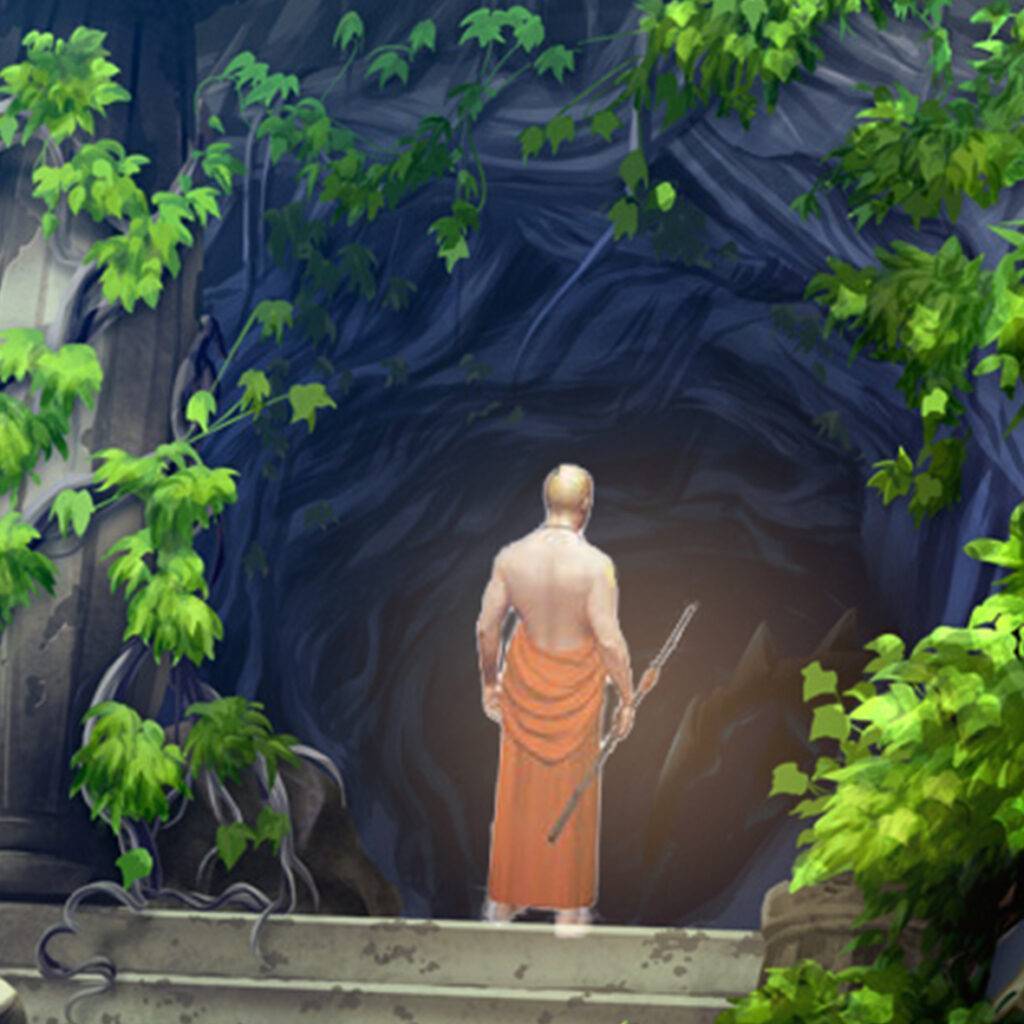


पुरुषोत्तमपादाब्जहृदयश्शास्त्रकोविदः |
पुरुषोत्तमतीर्थाख्यो गुरुर्भूयादभीष्टदः ||
Śrī Puruśottama Tīrtha was ordained the 10th Pīthadhipati by Śrī Jayadhvaja Tīrtha. This was after the successful Digvijaya of Śrī Rājendra Tīrtha and Śrī Jayadhvaja Tīrtha in the eastern parts of Bhārata – Bangāla and Kal̤inga Deśa. His Purvāśrama Nāma was Śrī Śrīnivāsācārya and he was one of the senior disciples of Śrī JayadhvajaTīrtha. As the name suggests, this event was supposed to have happened at Purī Jagannātha Kṣetra. As instructed by his guru, Śrī Puruśŏttama Tirtha moved to the Dakṣiṇa (south) Deśa.
He reached Channapattana, which, at that time was famous for the presence of the ancient Rāmāprameya Svami temple (https://www.tirthayatra.org/aprameya-swamy-temple/). He established by saints of the yore and where worship has been continous since then. This Kṣĕtra is referred to as Jñyāna Manṭapa in ancient scriptures.
Śrī Puruśottama Tīrtha chose the approach to the banks of river Kaṇva that is surrounded by the extremely attractive and wonderfully pristine environs as his abode and established the Ṇṛsiṁha temple, called as Kambada Narasimha of Abbur Dŏḍḍi. We are given to understand that this place was originally where Sage Kaṇva had his ashrama and did penance.
Unlike his predecessors, he chose to stop his tours and concentrate on penance at this wonderful place, performing the worship of the tutelary deities, and continuing with pedagogical activities for disciples. It is to be noted that the activities of Śrīmaṭha shifted to the southern part of the country from its original eastern direction during his time.
It is said that he never solicited Bhikśa Vandana but would proceed to the nearby cave, which is called as Purśottama Guhā now for penance after his daily worship. His Holiness would continue to ruminate on the contents of the Brahma Sūtra Bhāśya of Ācārya Madhvā in solitude. He would return next day morning for resuming the worship.
Śrī Puruśottama Tīrtha is referred to as ‘Śāstra Kovida:’ that speaks of the saint’s scriptural knowledge. Further, He was an expert in debates and is exclaimed as “Śivamata Stjāpakŏ Deśikona:” Madhva and Shiva are synonymous terms that mean ‘Mangal̤a’ and are capable of bestowing mukthi that is parama-mangala. We understand that Śrī Puruśŏttama Tirtha and Śrī Svarṇavarṇa Tīrtha, of the Śrī Padmanābha Tīrtha lineage, are contemporaries.
The saint anointed Narasimha, a young disciple of his to the Piṭha with the appellation Brahmaṇya Tīrtha and said to have retired to the cave where he used to perform his regular penance and miraculously disappeared from there. His holiness is perhaps the first after Ācārya Madhva to have followed this feat and there is no Vṛndāvanā assigned in the tradition of the Śrīmaṭha.
His Holiness is reverentially referred to as ‘Maḍi Svami’, ‘Huli Svami’, ‘Guhĕ Svami’ amongst locals and is purported to have been seen on several occasions. There were several occasions in the past when people inadvertently ventured into the cave and had to face hardships. At this point in time, a barricade is in place to prevent people entering the cave.
Source Vm
Previous (Shri Jayadvaja Teertharu) | Next (Shri Brahmanya Teertharu)
| Math | Shri Vyasaraja Math, Kundapura |
| Name of the Swamiji | Shri Purushottama Teertharu |
| Period | 1448 - 1460 |
| Guru | Shri Jayadvaja Teertharu |
| Shishya | Shri Brahmanya Teertharu |
| Poorvashrama Name | |
| Brindavan Located at | Abbur |
| Aradana Month | Chaitra |
| Paksha | Shukla |
| Tithi | Pratipada |
